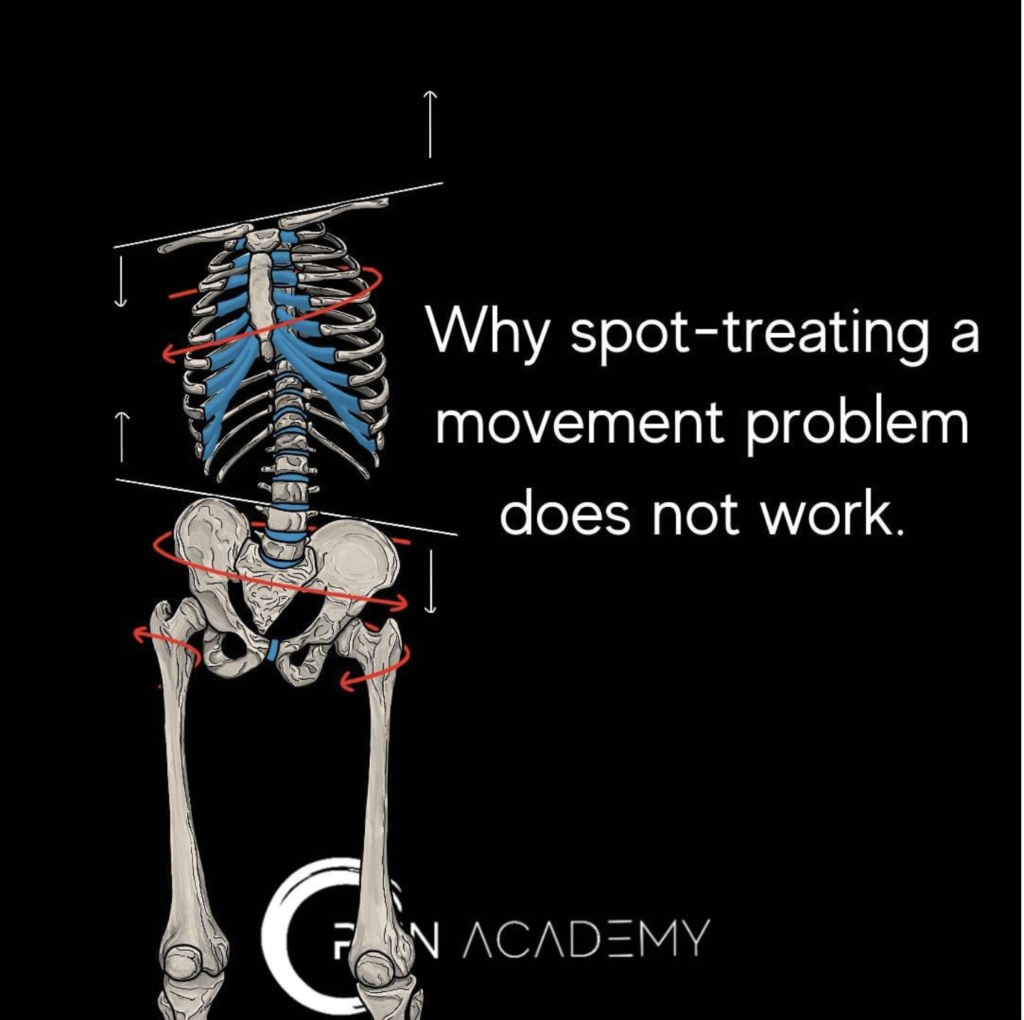
This is what balance looks like.
Rather I should say, this is how the body finds ‘balance’ when joint dysfunction and movement impairment occurs.
In this specific example, the main joint dysfunction has to do with the hips not rotating. The right hip can’t rotate well internally, so it stays externally rotated. The left can’t rotate well externally, so it stays internally rotated.
Walking with a rotational hip dysfunction like this would immediately create a significant limp, a heavy and loud foot thud with each step, a difference in stride length depending on which leg was stepping forward, and damage the soft tissue along with the joints fairly quickly.
Instead of a severe disabling limp occurring on day one of hip-joint dysfunction forming, the body ingeniously morphs and changes positions to help keep someone moving as gracefully as possible.
To help, the pelvis rotates counter-clockwise, and one side hikes up towards the ribs. The lower back shifts as a reaction to the rotated pelvis. The ribcage will counterbalance the pelvic position by rotating clockwise, and a shoulder will elevate/depress to stabilize the now-turned ribcage. The knees will twist, and the arches will either flatten or raise in response to the dysfunctional hip movement as well.
Put simply, every joint in the body will alter its position and movement when joint dysfunction is present.
Even though the hip dysfunction could be deemed as ‘the root cause’, just focusing on the hips alone will send someone running around in circles for years without making much progress; deep-seated compensation patterns of the entire body now prevent the hip dysfunction from truly changing.
In other words, the reaction now prevents any action. As long as the compensation continues, so will the dysfunction, and vice versa. It doesn’t matter which came first – they both need to change.
What makes our program and approach so effective is how we go after the compensation AND dysfunction simultaneously. Our full-body corrective routines help relax compensatory patterns while also helping you restore function to the dysfunctional areas.
Have any questions? We are here to help – email us at [email protected] so we can answer any questions you might have!